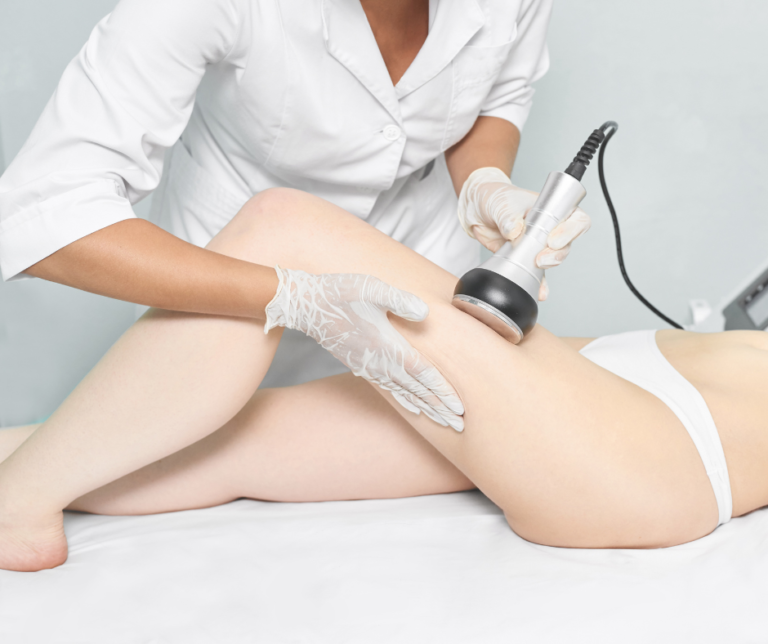The 12 Most Important Elements of a Plastic Surgery Website Design

Plastic surgeons should have a website that not only reaches potential clients, but also builds trust. To attract more visitors from search engines, the website should be mobile-responsive and user-friendly.
Recent studies have shown that many potential patients are now second-guessing physician referrals and relying on online sources to validate their choice. This is especially true for cosmetic enhancement procedures.
1. The purpose of the website
Your plastic surgery website is the virtual front door for your practice. The design, content and user experience must be able to entice online visitors and convert them into high-quality leads that eventually become paying patients.
Your website also needs to educate prospective patients about your procedures, as well as your experience and credentials. A comprehensive before and after gallery is a great way to demonstrate your expertise and get your message across.
The right combination of colors and graphics is often the key to a successful plastic surgery webs design. The correct color scheme will help you stand out from the competition and make the right impression on potential patients.
2. The design
The website design of a plastic surgery practice needs to be user-friendly and convert online visitors into patients. This means it should contain information about the procedures you offer, before-and-after photos, and testimonials.
A plastic surgery practice’s website should also offer a convenient way for potential patients to book an appointment online. It should also feature special offers and other information that can increase patient trust.
Some of these websites have a great color scheme and easy-to-navigate layouts. They also include social proof like awards and client testimonials.
3. The content
If you are trying to market your plastic surgery practice, your website is an important tool. It needs to be designed in a way that captures the essence of your practice.
Your website should also contain helpful content that explains what you offer and how it can help patients. A professional website design company can help you build pages of content that speak to prospective patients’ concerns and desires.
The content on your plastic surgery website should not only answer their questions but also provide a sense of trust that makes them more likely to call you.
In addition to providing information, your plastic surgery website should include contact information and testimonials from previous patients. These can help potential patients feel more comfortable contacting you, which can increase patient volume.
4. The contact information
A plastic surgery website should provide contact information and testimonials that make potential patients feel comfortable booking an appointment with the doctor. This helps to build trust and familiarity, which in turn leads to increased patient volume.
In addition to this, a website should be responsive so that it will adapt to different devices and browsers. This ensures that potential patients can visit the site from their mobile phones without having to worry about it not working.
For example the Aesthetica website https://aestheticamedspanj.com/ does a great job of using spacing to showcase its text and pictures. It also makes the most of its color scheme and has a button that allows visitors to schedule a consultation. Its other features include social media links and a link to the book now button. It also uses smooth animations and a simple navigation system.
5. The testimonials
The best part about having a high-end cosmetic surgery website is the opportunity to showcase your work. This is where you can make your mark on your competition by implementing some of the best SEO practices out there. In today’s competitive environment, a well-optimized site will generate a healthy dose of web traffic with a high probability of conversion into actual clients. With this in mind, it’s time to take a look at the most important elements of your plastic surgery website and determine the best way to improve your ranking. You may be pleasantly surprised by the results. You will also be pleased to find out that the best way to do it is in a well-designed and branded manner.
6. The gallery
If you’re a plastic surgeon or aesthetic medicine specialist, you need to make sure that your website looks great. It should be mobile-friendly and SEO optimized to drive organic traffic.
One of the most important elements on a medical website is the gallery. This should feature stunning images that evoke a sense of excellence.
The gallery should also include before and after photos of your patients. The images should be high-definition so that people can enlarge them to see more details.
Another way to increase your website’s engagement is to show pictures of real people instead of models. This makes the site more relatable to people who are looking for cosmetic surgery.
Rapaport Plastic Surgery is a great example of this. Their eye-catching trendy colors and simple navigation make it easy to find the services they offer. They also use strong social proof by showing consumers that they’ve been featured in popular magazines.
7. The blog
Your website’s blog should be regularly updated with articles that inform, educate and engage your potential patients. Your content should answer commonly asked questions, and help prospective patients understand the benefits of their plastic surgery or aesthetic procedure.
The content on your site should also be easy for visitors to find and navigate, making it simple for them to schedule an appointment or contact you. This makes your digital presence more powerful and a valuable tool for marketing and converting your business.
Your website should showcase your expertise by showing examples of your work. This is best done in an image gallery, which should include a wide variety of before-and-after photos, as well as patient testimonials.
8. The contact form
Whether you’re a new or experienced plastic surgeon, it’s always important to have a contact form on your website. This way, potential patients can easily get in touch with you and schedule an appointment.
Having a contact form is also one of the best ways to capture leads. It allows you to send them periodic messages about your services and keep your practice top of mind when it’s time for them to choose a plastic surgeon.
It is also a great way to build trust with potential clients. This will help you convert more visitors into paying customers.
9. The navigation
A well-designed website will help you entice potential patients to contact your practice. In addition, your website should provide useful information that will educate and inform them.
For example, many plastic surgery websites include before-and-after photos of their patients. These photos are a good way to prove your expertise and skill in the field.
Including a wide variety of before-and-after photos also gives your prospective patients a chance to see happy people who look like them or who have had similar problems corrected.
You should also keep in mind that a lot of your traffic comes from mobile devices. Therefore, it is essential that your plastic surgery website has a responsive design. This means that it will automatically adjust to the screen size of different devices.
10. The social media
In today’s world, one of the most important parts of a successful plastic surgery webs design is your social media channels. These platforms help to build a fan base for your practice in the location and demographic you want to target, generating both new and referral business.
The right social media presence can help patients find you, convert them into leads and ultimately make their decision to have cosmetic surgery. It can also give you a great opportunity to hear from your followers about their experiences, which can help you improve your marketing strategies and increase patient retention.
Instagram is a great place to show before and after photos of your work, your staff, office shots or new products you sell. Facebook could be used to post about events you have going on or special deals you are offering, links to your blog posts or even short videos of clients talking about their experience at your clinic.
11. User Experience (UX)
User experience refers to how a person interacts with a website. A plastic surgery website should be user-friendly, easy to navigate, and visually appealing. Patients should be able to find the information they need quickly and easily, such as the surgeon’s qualifications, services offered, before and after photos, and contact information.
12. Mobile Responsiveness
In today’s mobile-first world, it’s essential that a plastic surgery website is mobile-friendly. This means that the website should be optimized for mobile devices, such as smartphones and tablets. Patients should be able to access the website and navigate it easily on their mobile devices. A website that is not mobile-friendly may deter potential patients from using the site or scheduling a consultation.
The Latest Trends in Non-Invasive Body Contouring

As people become more health-conscious, non-invasive body contouring has become increasingly popular in the last few years. It’s a quick and effective way to get rid of stubborn pockets of fat and sculpt your body into the shape you desire. If you’re a med spa looking to attract new clients and retain existing ones, it’s essential to stay up-to-date with the latest trends in non-invasive body contouring. In this blog post, we’ll take a look at some of the latest trends in non-invasive body contouring and how you can leverage them to grow your med spa business.
- Vanquish
This non-invasive treatment uses radiofrequency energy to heat and destroy fat cells in the abdomen, thighs, and love handles. The procedure is painless and requires no downtime.
- Zerona
This low-level laser therapy targets fat cells without damaging the surrounding tissue. The procedure is usually done on areas such as the waist, hips, and thighs.
- Cryolipolysis
Cryolipolysis, also known as fat freezing, is a non-invasive body contouring treatment that uses cold temperatures to freeze and destroy fat cells. The procedure is safe and effective and can be used to target stubborn areas such as love handles, belly fat, and double chins. Cryolipolysis has become increasingly popular in recent years and is now one of the most sought-after non-invasive body contouring treatments in the market.
To incorporate cryolipolysis into your med spa’s offerings, you should invest in the latest fat-freezing machines, train your staff to use them, and educate your clients about the benefits of the treatment. You should also consider offering package deals or discounts to encourage clients to try cryolipolysis and build brand loyalty.
- Exilis
This non-invasive treatment uses radiofrequency energy to heat the skin and underlying tissues, causing them to contract and tighten. Exilis is also used to reduce the appearance of cellulite and to contour areas such as the abdomen, thighs, and arms.
- BodyFX
This non-invasive treatment combines radiofrequency energy, vacuum massage, and ultrasound to reduce fat and improve skin elasticity. BodyFX is also used to treat cellulite and contour areas such as the abdomen, thighs, and arms.
- Radiofrequency
Radiofrequency is a non-invasive body contouring treatment that uses radio waves to heat up the skin and stimulate collagen production. The procedure is safe, painless, and can be used to tighten loose skin, reduce wrinkles, and improve the appearance of cellulite. Radiofrequency has become increasingly popular in recent years and is now one of the most sought-after non-invasive body contouring treatments in the market.
To incorporate radiofrequency into your med spa’s offerings, you should invest in the latest radiofrequency machines, train your staff to use them, and educate your clients about the benefits of the treatment. You should also consider offering package deals or discounts to encourage clients to try radiofrequency and build brand loyalty.
- truSculpt
This non-invasive treatment uses radiofrequency energy to heat and destroy fat cells in the abdomen, flanks, thighs, and chin. The procedure is usually painless and requires no downtime.
- SculpSure
This is a laser-based treatment that targets and destroys fat cells using heat. The procedure is usually done on areas such as the abdomen, thighs, and love handles. The destroyed fat cells are then eliminated by the body over time.
- Ultrasound
Ultrasound is a non-invasive body contouring treatment that uses sound waves to penetrate the skin and destroy fat cells. The procedure is safe, painless, and can be used to target stubborn areas such as love handles, belly fat, and double chins. Ultrasound has become increasingly popular in recent years and is now one of the most sought-after non-invasive body contouring treatments in the market.
To incorporate ultrasound into your med spa’s offerings, you should invest in the latest ultrasound machines, train your staff to use them, and educate your clients about the benefits of the treatment. You should also consider offering package deals or discounts to encourage clients to try ultrasound and build brand loyalty.
- CoolSculpting
This is a non-invasive treatment that uses a controlled cooling process to freeze and eliminate stubborn fat cells. The procedure is usually done on areas such as the abdomen, thighs, and love handles. Once the fat cells are frozen, they gradually break down and are eliminated by the body over time.
- Liposonix
This ultrasound-based treatment selectively destroys fat cells using heat. The procedure is usually done on areas such as the abdomen and flanks.
- Non-invasive muscle building
Non-invasive muscle building is a new trend in the non-invasive body contouring market. These treatments use electromagnetic energy to stimulate muscle contractions and build muscle mass. Non-invasive muscle-building treatments can be used to tone and strengthen muscles in the abdomen, arms, thighs, and buttocks.
To incorporate non-invasive muscle building into your med spa’s offerings, you should invest in the latest equipment, train your staff to use it, and educate your clients about the benefits of the treatment. You should also consider offering package deals or discounts to encourage clients to try non-invasive muscle building and build brand loyalty.
- UltraShape
This treatment uses ultrasound energy to selectively destroy fat cells without damaging the surrounding tissue. The procedure is usually done on areas such as the abdomen, flanks, and thighs.
- Velashape
This treatment combines radiofrequency energy, infrared light, and vacuum massage to reduce fat and improve skin texture. Velashape is also used to treat cellulite and contour areas such as the abdomen, thighs, and arms.
- Hybrid Treatments
Another trend in non-invasive body contouring is hybrid treatments, which combine two or more technologies to enhance the overall effectiveness of the treatment. For example, combining cryolipolysis with radiofrequency or ultrasound can yield better results than using a single technology alone.
Hybrid treatments can offer clients more comprehensive solutions to their body contouring needs, and med spas that offer them can stand out in a competitive market. To incorporate hybrid treatments into your offerings, you should invest in the necessary equipment and technology, train your staff to perform the treatments, and educate clients about the benefits of combining treatments.
In conclusion, staying up-to-date with the latest trends in non-invasive body contouring can help med spas stay competitive and grow their business. Cryolipolysis, radiofrequency, ultrasound, combination treatments, virtual consultations, personalization, non-invasive muscle building, hybrid treatments, men’s treatments, and sustainability are all trends to consider when developing your med spa’s offerings. By investing in the necessary equipment, technology, and training, and promoting your services on social media and your website, you can attract new clients and retain existing ones, and build a successful med spa business.
Marketing Microdermabrasion and Chemical Peels

Excelling in online marketing for medspa’s interested in promoting microdermabrasion and chemical peels is an excellent way to help clients achieve healthier and younger-looking skin. These non-invasive treatments can help resurface the skin by removing dead skin cells and revealing fresher, healthier skin. The two procedures can effectively reduce fine lines, acne scars, and sun damage, and take less than an hour to complete. By marketing these procedures, medspas can highlight the benefits of improving skin texture, reducing fine lines, and restoring a youthful glow.
In this blog post, we’ll dive into the benefits of microdermabrasion and chemical peels, how these treatments work, and how medspas can market these procedures to clients interested in rejuvenating their skin.
What is microdermabrasion? Microdermabrasion is a non-invasive procedure that removes the top layer of dead skin cells to reveal healthier, smoother skin. During the procedure, a diamond-tipped wand is used to gently exfoliate the skin, stimulating the production of collagen and elastin, which improves the overall health and appearance of the skin. The procedure is performed in less than an hour, making it a popular option for people with busy schedules.
Benefits of microdermabrasion:
- Removes dead skin cells and reveals fresher, healthier skin
- Reduces the appearance of fine lines and wrinkles
- Improves skin texture and tone
- Reduces the appearance of acne scars and hyperpigmentation
- Increases collagen production, which improves the overall health and appearance of the skin
What is a chemical peel? A chemical peel is a non-invasive procedure that uses a chemical solution to exfoliate the outermost layer of the skin. The procedure can be customized to suit individual skin types and concerns, including fine lines, wrinkles, acne scars, and hyperpigmentation. Chemical peels can take less than an hour to complete, making them a popular option for people with busy schedules.
Benefits of chemical peels:
- Removes dead skin cells and reveals fresher, healthier skin
- Reduces the appearance of fine lines and wrinkles
- Improves skin texture and tone
- Reduces the appearance of acne scars and hyperpigmentation
- Increases collagen production, which improves the overall health and appearance of the skin
How can medspas market microdermabrasion and chemical peels? Marketing microdermabrasion and chemical peels can be an effective way to help potential clients learn more about the procedures and the benefits they offer. Here are some tips for marketing these procedures:
- Educate potential clients: It’s important to educate potential clients about the procedures and the benefits they offer. Medspas can use their website and social media channels to provide information about the procedures, including how they work, what to expect during the procedure, and the results they can expect.
- Highlight the benefits: Medspas can highlight the benefits of microdermabrasion and chemical peels in their marketing materials. This can include information about how the procedures can improve skin texture, reduce fine lines and wrinkles, and restore a youthful glow. Before-and-after photos can also be a powerful way to demonstrate the results that can be achieved with these procedures.
- Offer specials: Medspas can offer specials on microdermabrasion and chemical peels to entice potential clients to give the procedures a try. This can include discounts on the procedures or bundled packages that include multiple treatments.
- Partner with influencers: Partnering with influencers in the beauty and skincare space can be an effective way to reach a wider audience. Influencers can provide reviews of the procedures and share their experiences with their followers, which can help build trust and credibility with potential clients.
- Provide exceptional service: Providing exceptional service
Healthcare Marketing

Running a medical practice without proper healthcare marketing in 2020 can be disastrous. No matter where your clinic may be, from New York to LA, developing an effective marketing strategy with healthcare marketing experts is the best way to make your business grow.
New patients are crucial to the success of your practice, and healthcare marketing guarantees a constant stream of new patients contacting your team daily. Make the switch to full-time healthcare marketing and avoid the possibility of your competitors outgrowing you online.
In this article, we discuss exactly why healthcare marketing has never been more important than right now. We answer the questions: what does healthcare marketing entail, what are the tools and strategies required, and what is everything else you need to know to begin your first or best healthcare marketing campaign yet.
Why Healthcare Marketing Is Absolutely Necessary In 2020
Today’s healthcare industry is more sophisticated and advanced than ever before. Clinics and healthcare providers now have the latest equipment and technologies to provide the best care possible, and patients have higher expectations now more than ever. Also we definitely recommend to have a look at this site from our partners – https://blackjack-online.nz/. Thank you!
Simply put, the healthcare industry evolves at a pace many doctors and clinics can’t match without the help of a strong healthcare marketing strategy. It’s no longer enough to keep your training, techniques, and equipment up-to-date; doctors also need to consider their healthcare marketing, and how it can be made more cost-effective and customer-centric.
Here are some reasons why healthcare marketing is now a necessity:
The world has gone digital

Before the internet, doctors and clinics could grow their business with just their reputation and patient word-of-mouth. Their main source of new client acquisition came from referrals, from other doctors and satisfied patients.
But the mass adoption of the Internet has changed the healthcare landscape. Healthcare providers that refuse to go digital find themselves losing patients to clinics who advertise online. Here’s why:
- Patients are now totally aware of all healthcare providers in their area. They can assess and compare all available healthcare options: 5% of all searches on Google are health-related
- Patients are less likely to ask for healthcare recommendations from their primary care physicians and their personal networks; instead, they are more likely to ask help from Google, meaning natural word-of-mouth is no longer as effective
- Since patients use Google to find new clinics instead of asking their doctors and friends, this means that healthcare marketing is now more important than a doctor’s reputation
General consumer behavior has changed general patient behavior

The digital world has changed general consumer behavior. This means patients have different expectations when it comes to all services they use, including healthcare provider services.
Healthcare marketing ensures that your online image is just as professional and intelligent as your real-life image. With an experienced digital team by your side, you can ensure that your reputation and expertise are properly reflected online. And patients notice and appreciate this effort.
Some of the expectations patients now have include:
- Being able to connect with their doctor and healthcare practice across multiple channels
- Being part of a transparent online community that works to retain and grow their long-term loyalty. One study found that “media richness had a strong, positive, and direct effect on brand loyalty”
- Being given timely and relevant content through online outreach across social media, newsletters, and emails
While it may seem unnecessary for healthcare providers to invest so much in their online presence, the extensive role of online activity has trained patients to trust businesses with active online platforms over those without.
This includes clinics and the general healthcare industry. Millennials are actually much likelier to switch practices than previous generations, with an estimated 43% of US millennials changing doctors every few years.
Online and virtual services make growth limitless
Healthcare organizations have traditionally never had to worry too much about growth. Your number of patients is limited by the number of working hours in a day. As long as you keep a full schedule of patients, you can consider yourself a success.
But the online world and the rise of telemedicine over the last few years means that growth possibilities of a local healthcare provider and healthcare practice are endless. Here are some of the reasons why growth potential is much higher now with telemedicine:
- Telemedicine allows doctors to save time between appointments, allowing doctors to treat more patients throughout the day
- Telemedicine makes it easier for patients to book appointments and meet doctors, meaning they are likelier to become more active
- Telemedicine still has much room for growth, with one study finding that 82% of Americans still haven’t used telemedicine services. Growth over the next few years will be the most significant change in the healthcare industry in decades
With a proper healthcare marketing strategy that aims to maximize upward growth, your clinic could multiply your overall patient count several times over.
Core Aspects of Modern Healthcare Marketing
So what are the core aspects of modern healthcare marketing for healthcare marketers to get best results? Modern marketing healthcare practices should revolve around the following principles:
- Healthcare Customer Relationship Management: Also known as HCRM, this type of platform uses the clinic’s existing database to optimize multichannel healthcare campaigns to maximize outreach to your audience. This improves customer service, patient experience, patient engagements, and encourages loyalty and long-term relationships.
- Marketing Automation Strategies: Marketing in healthcare means getting the most out of automation software, or working with an online marketing team that can develop content distribution and engagement plan activities. They can develop automatic triggers that react to patients depending on what they do. These can be used together with a healthcare marketing strategy through email, social media, and other paid campaigns.
- Content Management System: Also known as CMS, this kind of software lets you build healthcare marketing content and integrate it with your HCRM to align your content strategy with your marketing strategy. Digital marketing efforts that combine content and distribution across multiple channels can help you get the most out of your budget.
- Patient Engagement Center and Marketing Pipelines: Marketing for healthcare requires a patient engagement center where patients can interact to learn more about your clinic. This can be done online, over the phone, through text, and more.
What Makes Good Healthcare Marketing: Tools and Techniques
Healthcare marketing tools that healthcare marketers used can be complicated, as they generally require years of digital marketing experience to understand. Here are some tools that healthcare marketers use to grow any healthcare provider’s online presence:

Web Design and Development
No respectable marketing efforts begin without a focus on web design and development. Your online platform is the core of your online presence. An active social media presence can’t replace the value of a professional, fast, and beautiful website.
Patients expect a flawless experience when they visit your page on whatever device: computer, tablet, or smartphone. Speed, navigation, content, call-to-actions; all of these and more will influence whether patients schedule their first or next appointment.

Ads and Analytics: PPC, Facebook, Instagram
So many of us spend so many hours per day on social media, making it one of the best places to reach new patients through online ad campaigns. Digital marketing teams work on optimizing ads to maximize ROI.
Your digital team should utilize marketing strategies that get the most out of PPC marketing (also known as paid search marketing, search engine marketing, and pay-per-click), Facebook ads, and Instagram ads. They should also have the expertise to perform analytics to make every campaign better than the last.

Reputation Management
Did you know it only takes 1 to 6 online reviews for a potential patient to form an opinion on your health practice or clinic? So what do you know about your online presence? What are people saying about your health medical practice on all the platforms? No health care marketing strategy is complete without time spent refining a business’s online reputation.
With an amazing health system digital marketing team like PracticeBloom, you can get your reputation under control before it gets out of hand. This means monitoring the reviews and discussion around your medical practice, and developing the right reputation digital marketing strategies to improve the way your healthcare services look.

Social Media Marketing and Content Marketing
There’s a lot more to social media marketing than sending out funny Tweets and publishing weekly blogs. The difference between an average social media junkie and a professional digital marketing team with customized marketing strategies is the difference between zero organic visitors and too many of them.
Healthcare marketers study everything around your clinic to gain the necessary insight and make the proper adjustments to boost your site’s rankings. This means utilizing all relevant information: site navigation, information architecture, WordPress security, word count, and more. We use data scientists to engineer the most cost-efficient SEO and social media marketing strategy possible.
Call Tracking
Marketing is all about results, and results mean calls. A professional health marketer team should equip your business with patient call tracking, so you can analyze your marketing strategy.
Even the top New York healthcare practice cares about their call numbers, and they analyze their call data. Calls are more important than web leads, with caller retention rate being 28% higher than retention rate from the web.
Health system marketing teams understand the importance of tracking every patient and their call, and helping your health system staff push those numbers higher while making each patient call count for more.
It’s all about maximizing the patient experience, and the patient experience is all about that first call.
Main Challenges In Healthcare Marketing and How to Overcome Them
Healthcare marketing isn’t as simple as creating a beautiful website and expecting patients to book appointments. The healthcare industry has become oversaturated with too many practices and clinics with their own websites. These days, creating a website is the bare minimum to healthcare marketing.
With telemedicine, video conferencing, and remote health system consultation gaining a major foothold in the digital age, you aren’t just competing with other clinics in your area. Patients can now choose from clinics from all over the world, and if they have better marketing, patients might never consider your services.
But coming up with the best healthcare marketing plan isn’t impossible. It begins with understanding the challenges specific to the healthcare industry, and finding solutions to overcome them.
Here are the most common challenges when marketing online in the healthcare industry:
–
Incorrect Targeting

Traditional marketing believes that casting the widest net possible is the best way to get the largest audience. But this simply doesn’t apply to modern consumer behavior.
Healthcare is a broad field with multiple disciplines involved. Each health discipline involves a specific skill set and expertise. Modern patients are looking for hyper targeted clinics that focus on one thing and nothing else because specialization generally means high expertise. Amongst the many choices of clinics, patients tend to choose those which address their specific concern.
If you run a podiatry clinic, your marketing plan should target clients who have foot and ankle ailments. If you operate a chiropractic clinic, target patients with chronic back pain and spine alignment issues. Understanding your target market or best patient group and hyperfocusing on them are the first steps to creating a healthcare marketing campaign that works.
Outdated Marketing Tactics

The general internet is savvier than ever before. Your patients can see through attempts at upselling unnecessary services and overbearing sales talk. These days, effective healthcare marketing should focus on authority building and value proposition.
Your relationship with your patients doesn’t start when they walk through the doors. With an online presence, your relationship with them begins the moment they click on your website and visit a page or read an article. Modern consumer behavior is predicated on heavy research and individual assessment before they contact your sales representative.
It’s not that ads are no longer important; it’s that content is now just as important as ads. The content you publish, the words on your website, the reviews you have online; all these contribute to your clinic’s image. Cultivating that image through trust-building assets is the foundation of effective healthcare marketing and building loyalty with every patient.
Insufficient Budget
Healthcare marketing is a complex organism with different internal processes. These processes include targeted ads, setting up landing pages, producing valuable content, and showcasing a beautiful and functional website. Too many business owners believe that you only need one or two marketing aspects for a perfect campaign.
It doesn’t work this way in healthcare marketing. To drive real results, you need to invest in every single aspect of your healthcare marketing campaign. If you don’t do it, your competitors will, with healthcare global advertising expenditure expected to rise 3.6% this year to an estimated $36 billion.
The good news is that ROIs are well-defined and immediate. Good healthcare marketing agencies provide monthly reports on your progress. ROIs aren’t immediate — they usually take about 3-6 months before you can see the first results — but reputable agencies will always provide a clear status to help reframe your expectations.
Making the Most of Your Healthcare Marketing Strategies
Coming up with a patient strategy is just one aspect of healthcare marketing. Here are some tips on how to maximize your resources and achieve optimal results with every marketing campaign:
- Find And Focus On The Best Channels
Different patients respond to different channels. If your target market responds best through email instead of text, consider funnelling all your resources onto email marketing. The idea of hyper targeting doesn’t just apply to your patients – it should also apply to how you utilize your marketing channels.
While presence on multiple social media platforms is helpful in establishing ubiquity, running multiple ads on Instagram, Facebook, and Google Adwords simultaneously can easily waste your marketing budget.
Instead, run analyses on each platform to determine which social media platform receives the most traffic. Choose the platform with the most engagement and focus all ad spending there.
- Personalize When You Can
Modern patients don’t just prefer personalization, they expect it. With tools like CRM and email management platforms, it’s easier now more than ever to deliver that touch of personalized service.
But personalization in health care doesn’t stop at mentioning their names on emails or remembering their last appointment. This also includes creating sequenced campaigns and delivering content appropriate for them.
For instance, a new patient who just signed to your newsletter won’t need the same resources as a patient who has already undergone a treatment. Keeping the content relevant to your patients’ health care needs will make every interaction feel more special.
- Design Marketing Techniques With Objectives
A disconnect among upper level management, health care professionals, and marketers could bring down marketing initiatives. Firstly, healthcare marketing campaigns should work in favor of your professionals. That means adopting new technologies, services, and tools that will accommodate the influx of traffic and new appointments.
Keep in mind that not all marketing campaigns are created equally. Campaigns that are driven by brand awareness goals focus on building the brand and promoting the clinic. This may focus more on value proposition instead of opportunities to sell. On the other hand, sales-driven techniques are typically ad-heavy and utilize email and text messaging campaigns to increase bookings and drive profits.
While it’s possible to launch these campaigns simultaneously, taking the time to build your practice or clinic from the ground up is the best way to make sure that all bases are covered effectively. With a strong presence, it might not make sense to stick to brand building. Talk with your team to align your marketing efforts with organizational goals.
What an Effective Strategy Looks Like
Health care marketing campaigns vary on a per clinic basis; not all practices have the same marketing needs. However, there are fundamental elements necessary to guarantee a campaign’s success.
Listed below are some ways we’ve maximized results in the past as a healthcare marketing agency:

It Starts with the Website
At PracticeBloom, we implement healthcare marketing strategies from the ground-up. Clinics, practices, and similar institutions in the health care industry are usually too busy to design beautiful websites. Common issues involve having an outdated design, a confusing and clunky interface, bad copy or no copy at all.
Healthcare marketing begins with a beautiful site – one that your patients want to visit. This embodies your brand and what you stand for as a clinic, and sets the tone for all your content.

High-Quality Content Marketing
Having a beautiful site isn’t enough. Publishing top-quality SEO content designed to rank well on search engines boosts your site ranking, making you visible on targeted keywords.
In return, searchers looking for specific services (“colonoscopy in NJ”, “colonoscopy visit”, “do I need a colonoscopy”) are funneled to your site. Even if the reader’s intent isn’t to book an appointment, having your site as a viable resource puts you on their radar. When it’s time to book, a patient is more likely to make an appointment with a clinic that helped them understand the topic instead of a different clinic.
Targeted Ads and Social Media Campaigns
Good healthcare marketing agencies believe in the power of organic traffic. But to drive even faster results, they spend their time creating targeted ads on social media or any other channel relevant to your clinic or practice.
Think of content as the lure and ads as the bait; it’s the final piece of the puzzle that gets your patients to bite on an offer. Marketing for a patient is different from marketing for the average consumer. Including specific offers in the call-to-action (book a free chiropractic adjustment; get $100 off your podiatrist visit) is guaranteed to get the bookings to create significant returns on your investment.
Successful ads are driven by two crucial factors: targeting the right audience and creating a hyper targeted message. Knowing the demographic that needs to hear your messaging the most is key to success when it comes to paid marketing.
Let Your Practice Bloom with PracticeBloom
At PracticeBloom, we have turned healthcare marketing into a science. Using a combination of proprietary SEO tricks, email and content marketing, and smart ads on social media and Adwords, we give your practice or clinic the boost it deserves.
Learn more about what we do in our case studies section. Schedule a quick call with us to learn more about what makes PracticeBloom the choice healthcare marketing agency in NJ and beyond.


